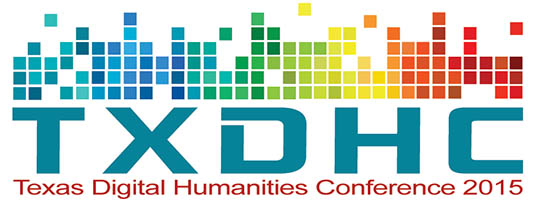Document Type
Presentation
Abstract
In 2009, Christine Borgman asked “Where are the social studies of digital humanities?” More specifically, she inquired, “Why is no one following digital humanities scholars around to understand their practices, in the way that scientists have been studied for the last several decades?” Arguing that such research has significantly shaped scholarly infrastructure for the sciences as “a central component of cyberinfrastructure and eScience initiatives,” Borgman urged DH to learn more about its own practices. For this study, we are “following around digital humanities scholars” from a range of backgrounds who function in a variety of roles within higher education, academic institutions. We have chosen “humanists” who work with the “digital” primarily because we are interested in the perspective of humanities scholars who find themselves working at the intersection of humanistic principles and the development of scholarly information infrastructures (defined by Borgman as “the technology, services, practices, and policy that support research in all disciplines”). While we understand that digital humanists do all kinds of work including administration, teaching, service, and writing (to name a few), we have chosen in this study to focus specifically on tasks and perspectives that are revealed in the process of project-based work. Digital humanities projects are often touted as the site of work that not only defines DH (Drucker 2009; Svensson 2010; Ramsay 2011, Manifesto 2009) but also the site of work in which the development of information infrastructure has the most potential to be impacted by theoretical perspectives imbued in humanist critique and vice versa. Better articulating what kind of work infrastructure development entails is particularly illustrative for considering information work in digital humanities because it is a “research area where the interests of humanists, technology researchers, and others converge” (Friedlander). Specifically, this paper will discuss our findings considering two essential topics: (1) the nature of the “information” work that digital humanists do; and (2) how we go about observing and studying such work to better understand ourselves. We have a mixed methods approach including topic modeling five years of “Day of DH” data as a glance into how DHers in general describe their work, interviewing approximately 20 digital humanists on their daily DH practices and the values they attribute to these practices as well as observations of “digital humanists at work.” Johanna Drucker reminds us that “humanistic theory provides ways of thinking differently, otherwise, specific to the problems and precepts of interpretative knowing—partial, situated, enunciative, subjective, and performative” and that DH is defined by its “emphasis on making, connecting, interpreting, and collaborating” (Drucker 2012). She notes that “[o]ur challenge is to take up these theoretical principles and engage them in the production of methods, ways of doing our work” (Drucker 2012). This study will provide a snapshot of these ways and consider how and if these theories and methods are reflected in the quotidian practices of the digital humanist? What is the nature of studying DH @ work?
Disciplines
Arts and Humanities | Digital Humanities
Publication Date
4-10-2015
Language
English
License

This work is licensed under a Creative Commons Attribution-NonCommercial-Share Alike 4.0 International License.
Recommended Citation
Clement, Tanya E., "Social Studies and Digital Humanities" (2015). Texas Digital Humanities Conference 2015. 19.
https://mavmatrix.uta.edu/digitalhumanities_conf2015/19

